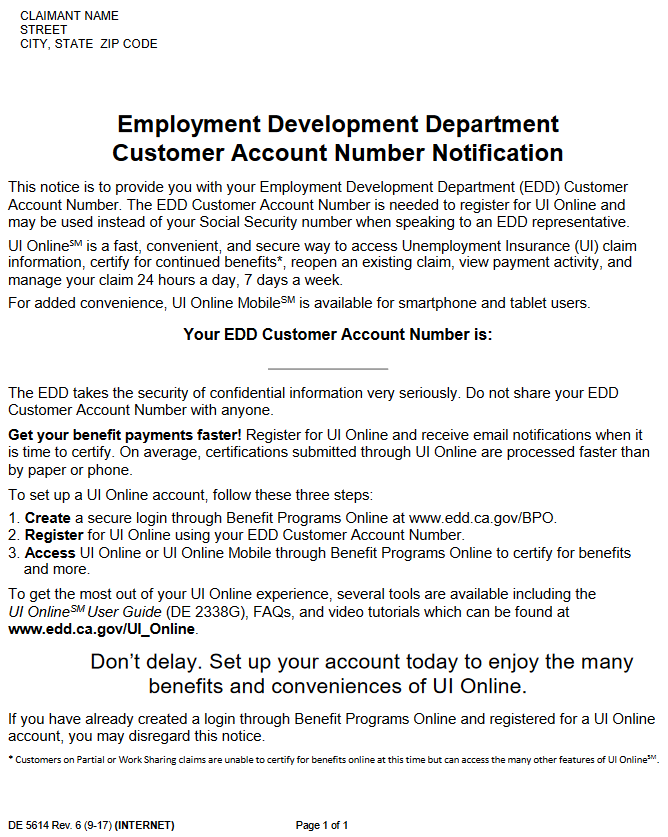Un
USCIS employees ask Congress to “please bail us out.”

USCIS recently asked Congress for $1.2 billion in emergency funding which they claim was a direct result of having fewer applicants during the pandemic. But after an internal investigation, it was revealed that USCIS already had a history of serious financial mismanagement and counterproductive policies prior to the pandemic ever arriving. USCIS also proposed a,
USCIS recently asked Congress for $1.2 billion in emergency funding which they claim was a direct result of having fewer applicants during the pandemic. But after an internal investigation, it was revealed that USCIS already had a history of serious financial mismanagement and counterproductive policies prior to the pandemic ever arriving.
USCIS also proposed a 10 percent surcharge on new immigration applications to pay the $1.2 billion back to U.S. taxpayers. USCIS already had announced its plans of increasing their application fees in 2019. If Congress doesn’t come to the rescue, USCIS is expected to run out of funds soon and will be sending two-thirds of their employee’s notices of temporary layoffs as early as next week.
USCIS’s funding comes directly from the fees people pay in pursuing immigration benefits, such as applications for naturalization and petitions for noncitizen workers.
But a close examination of USCIS’s operations before the coronavirus pandemic reveals a different story. Ineffective procedures, fiscal mismanagement, and a series of policies have harmed the agency’s own bottom line.

USCIS projected a 61% reduction in applications
- USCIS must become more fiscally responsible.
- USCIS data confirms that between 2017 and 2019 their cases already dropped by 10%.
- USCIS expanded its personnel by 1/4 between 2015 and 2018 despite a 10% decline.
- USCIS increased its payroll expenses while their revenue decreased.
- USCIS limited certain revenue generation tools in recent months
USCIS stopped “premium processing” applications for certain petitions ($1,440 guaranteed the processing of a petition within 15 calendar days ) Although, the damage to its bottom line was already done, on June 8, USCIS reversed this suspension and began accepting employment-based petitions again but only on an expedited basis.
Immigrants feared they will be denied their benefits and lose their filing fees.
USCIS’s recent public charge rule in October caused many applications to be denied which significantly affected applicants. The new policies, perhaps intentionally, made things a lot harder for applicants to file. As a result, USCIS received one million fewer applicants in 2019 compared to its 8.7 million applications in 2018.
- USCIS must become more efficient.
Although USCIS hired more personnel to process petitions and applications, quite the opposite happened. The time it took for an application increased and had the worst efficiency scores USCIS has seen in a long time. It took 46% longer to complete a case. This disrupted the lives of many applicants, agencies, businesses, and families who depended on USCIS to lawfully work in the USA.
The new policies that went into effect after the recent public charge rule forced officers to spend a lot more time on petitions and applications which also contributed to their low productivity.
- USCIS must become more transparent.
USCIS projected the $1.2 billion dollar shortfall in its proposed fee rule back in November of 2019, the same exact amount their asking Congress for now.
Despite their projected shortfall and its own lagging productivity, USCIS proposed to transfer $100 million in funding to U.S. Immigration and Customs Enforcement in the same proposal. A diversion maybe?
USCIS needs to provide more evidence of their internal accounting, including detailed expenditure data, information on per-officer productivity, and the recent growth of its fraud detection directorate.
Despite USCIS attempts to increase investigations and funding to detect application fraud, USCIS has not proved that fraud non-existent within its own walls of the immigration system.
, 
Un
FLAG.DOL.GOV: Essential Resource for PERM Labor Certification Recruitment Compliance
The Foreign Labor Application Gateway (FLAG) at https://flag.dol.gov/ serves as the Department of Labor’s comprehensive digital portal for employers seeking to hire foreign workers through various employment-based immigration programs. For employers navigating the complex PERM Labor Certification process, FLAG has become an indispensable tool that streamlines compliance with recruitment advertising requirements outlined in 20 CFR,
The Foreign Labor Application Gateway (FLAG) at https://flag.dol.gov/ serves as the Department of Labor’s comprehensive digital portal for employers seeking to hire foreign workers through various employment-based immigration programs. For employers navigating the complex PERM Labor Certification process, FLAG has become an indispensable tool that streamlines compliance with recruitment advertising requirements outlined in 20 CFR 656.17.
When conducting PERM recruitment activities, employers must meticulously document their good faith efforts to recruit U.S. workers before hiring foreign talent. FLAG integrates seamlessly with these requirements by providing a centralized platform to submit, track, and manage labor certification applications. The system specifically supports employers in demonstrating compliance with mandatory recruitment steps, including the placement of job orders with State Workforce Agencies, professional journal advertisements, and additional recruitment activities as specified under 20 CFR 656.17(e). By utilizing FLAG, employers can ensure their recruitment efforts align with Department of Labor standards, potentially reducing the risk of audit or denial during the PERM certification process.
PERM Recruitment Requirements and FLAG Integration
FLAG’s role in the PERM process becomes particularly valuable when addressing the specific recruitment documentation requirements of 20 CFR 656.17. The regulation mandates that employers conduct recruitment steps within 180 days of filing, including two Sunday newspaper advertisements, a 30-day job order with the State Workforce Agency, and three additional recruitment activities from a designated list. FLAG not only facilitates the proper filing of these recruitment efforts but also helps employers maintain the required recruitment report detailing lawful job-related reasons for rejecting U.S. applicants.
Recent updates to FLAG have enhanced its functionality for PERM applications, allowing employers to more efficiently upload supporting documentation, track prevailing wage determinations, and monitor case status in real-time. For immigration attorneys and HR professionals managing PERM cases, FLAG’s user interface provides critical visibility into the certification process, helping ensure that all regulatory requirements are met before and during the application period. As labor certification requirements continue to evolve, FLAG remains the authoritative platform for employers seeking to navigate PERM recruitment compliance successfully.
,
Un
THE H1B GUY NEWS (12/3/2021) H1B in Decline and Documented Dreamers in Limbo

The H1B Guy News for the week ending December 3, 2021.
Topics:
H1B in Decline
Documented Dreamers in Limbo
The Number of Immigrant Workers With H1-B Visas Drops the Most in a Decade
https://www.bloomberg.com/news/articl…
Ross, Padilla Lead 49 Colleagues in Urging DHS to Expand DACA Eligibility to Documented Dreamers
https://ross.house.gov/media/press-re…
Read the full post
Subscribe to The H1B Guy Podcast
Join The H1B Guy Channel and Chat on Telegram
Follow The H1B Guy on Twitter
Un
SWA Job Order California: What is an EDD Number?

What is an EDD Number? An EDD Number is technically the state unemployment insurance identification number that the Employment Development Department of California issues a company. Here’s a visual example from the UI Online FAQ: How do I register for an EDD Number? To register for an EDD Number (in California) use this link: https://www.edd.ca.gov/payroll_taxes/e-Services_for_Business.htm,
What is an EDD Number?
An EDD Number is technically the state unemployment insurance identification number that the Employment Development Department of California issues a company.
Here’s a visual example from the UI Online FAQ:
How do I register for an EDD Number?
To register for an EDD Number (in California) use this link: https://www.edd.ca.gov/payroll_taxes/e-Services_for_Business.htm
The EDD Number form will look like this when you receive it. (see below image)
It’s on a form known as DE-5614. Click here for a PDF sample: https://www.edd.ca.gov/pdf_pub_ctr/de5614.pdf
How do I find my company’s EDD Number?
Per the EDD do as follows:
All Unemployment Insurance customers who file a new claim will automatically receive their Employment Development Department (EDD) Customer Account Number (DE 5614) letter within 10 business days of filing.
If you have lost, misplaced, or never received your EDD Customer Account Number, contact the EDD:
Online: Go to Ask EDD and select the category Unemployment Insurance Benefits, the sub category UI Online, and the topic EDD Customer Account Number. Select Continue at the bottom of the page to begin the process of submitting your message.
By Phone: Call 1-800-300-5616 from 8 a.m. to 8 p.m. (Pacific time), seven days a week.
Why do I need an EDD Number for PERM Recruitment?
What else can I use my EDD Number for?
UI Online
Register for UI Online
CalJobs Registration
, 
-

 Un5 years ago
Un5 years agoPERM Process Flow Chart
-

 Enforcement News15 years ago
Enforcement News15 years agoFake ID Makers Arrested In Dallas
-

 BREAKING5 years ago
BREAKING5 years agoPERM Recruitment Advertising, How It Works.
-

 Today's News13 years ago
Today's News13 years agoImmigration: Gangster Tats = Visa Denied
-

 BREAKING5 years ago
BREAKING5 years agoUSCIS Statement Throws Constitution Out the Window
-

 BREAKING3 years ago
BREAKING3 years agoHouse Republicans push asylum restrictions, border security
-

 BREAKING4 years ago
BREAKING4 years agoDeSantis parts with Trump in response to Surfside tragedy
-

 BREAKING3 years ago
BREAKING3 years agoBiden is ignoring immigration issues, voters say in poll





